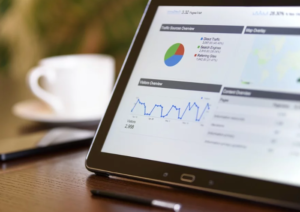Based on Alexa traffic rankings, YouTube is the second most visited site on the web, right after Google. Unfortunately, a lot of digital marketers still treat it like any other social media site. But success on YouTube isn’t about posting content; it’s about optimizing your content — just like your website.
It’s easy to find videos with millions of views and videos with almost none that are basically the same. The difference between success and failure often boils down to a few elements.
When it comes to YouTube SEO, a lot of the optimization work can be encapsulated into a process that you can apply to all your old videos and then to each video as you publish it. And you’re about to learn that process.
Always Track the Search Rankings of Your Videos
You probably track your positions in the Google search results for a range of your favorite keywords, but are you doing this with YouTube? If not, you should be! There are many tools for this, both free and paid, so find one that you feel comfortable with so that you can track your progress as you optimize your videos.
Consistency and Creativity Must Go Hand in Hand
Obviously, to compete with all the other creators in the fast-paced, aggressive world of YouTube, you need great content that stands out from the crowd. While achieving a viral hit is great, remember that YouTube isn’t just about views: You’re looking to build a subscriber base and form long-term relationships with viewers.
How can you accomplish this? By producing quality content and publishing it on a regular schedule. Posting irregularly will only hurt you and result in lost subscribers. If you commit to posting every day, make sure you post every day. If you post once a week at 9:00 a.m. on a Tuesday, never skip a week or post a late video (even if it is only a few hours or the next day).
You Can’t Optimize Your Content Later
 YouTube’s algorithms are notoriously unforgiving. When you upload a new video, make sure you have all your optimizations ready to go (see below). Come out of the gate strong, or not at all. Don’t publish a video with the intention of optimizing it sometime later. If YouTube can’t get a clear picture of what your video is about, or if you aren’t getting any traction from viewers (in terms of watch time and other engagement metrics), you’ll suffer in the rankings — and it will be hard to recover that lost ground.
YouTube’s algorithms are notoriously unforgiving. When you upload a new video, make sure you have all your optimizations ready to go (see below). Come out of the gate strong, or not at all. Don’t publish a video with the intention of optimizing it sometime later. If YouTube can’t get a clear picture of what your video is about, or if you aren’t getting any traction from viewers (in terms of watch time and other engagement metrics), you’ll suffer in the rankings — and it will be hard to recover that lost ground.
While it is possible to go back and fix poorly optimized videos by revising the titles, description, tags, thumbnail, transcript and so on (which I do encourage), much of the damage will have already been done after the first 48 hours have passed. It is incredibly hard to come back from being buried once the algorithm has judged your content as unworthy (please forgive the Thor reference).
